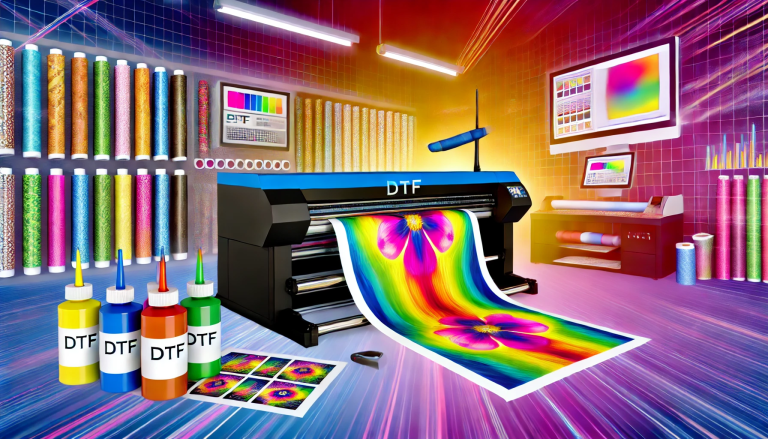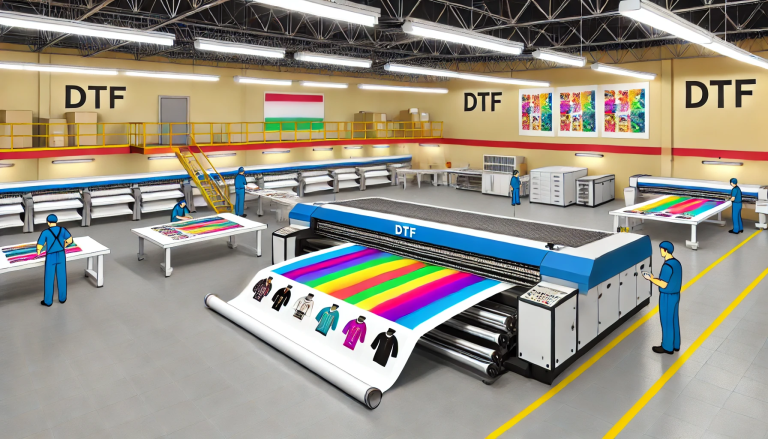In the world of textile printing, Direct to Film (DTF) transfer technology has emerged as a game-changer, offering unprecedented flexibility, quality, and efficiency. However, as with any technology, the longevity of DTF transfers is a critical aspect that determines its practicality and sustainability in the competitive market. This article delves into the factors affecting the durability of DTF transfers, the advancements made to enhance their lifespan, and practical tips for maximizing their longevity.
Understanding DTF Transfer Technology
Before examining the longevity of DTF transfers, it’s essential to understand what DTF technology entails. DTF printing involves printing a design onto a special film and then transferring it onto fabric using heat and pressure. This method stands out for its ability to print on a wide range of fabrics, including those that are challenging for direct-to-garment (DTG) printers, and for its vibrant, high-quality results.
Factors Affecting the Longevity of DTF Transfers
The longevity of DTF transfers is influenced by several key factors:
Quality of Materials
The type of film, ink, and powder adhesive used in DTF printing can significantly impact the durability of the final product. High-quality materials ensure better adhesion of the print to the fabric, resulting in longer-lasting designs.
Printing Process
The precision of the printing process, including the accuracy of the printer and the proper curing of the ink, plays a vital role. Inadequate curing can lead to designs that crack or fade prematurely.
Fabric Type
The fabric onto which the design is transferred also affects longevity. Natural fibers like cotton tend to hold the transfer better over time compared to synthetic fibers, which may not bond as well with the adhesive.
Post-Transfer Care
How the textile is cared for post-transfer significantly impacts the longevity of the design. Washing conditions, temperature, and the use of harsh chemicals can all affect the durability of DTF transfers.
Advancements Enhancing DTF Transfer Longevity
The industry has made significant strides in enhancing the longevity of DTF transfers. Innovations include:
- Improved Inks and Adhesives: New formulations provide better bond strength and flexibility, reducing cracking and peeling.
- Advanced Printers and Curing Techniques: Modern printers offer more precise application of inks, and advanced curing techniques ensure inks are properly set, enhancing durability.
- Specialized Films: The development of films that better adhere to a wider range of fabrics has improved the versatility and longevity of DTF transfers.
Maximizing the Longevity of DTF Transfers
To ensure the longest possible life for DTF transfers, several best practices should be followed:
- Select Quality Materials: Opt for high-quality inks, films, and adhesives from reputable suppliers.
- Follow Manufacturer Guidelines: Adhere to the recommended printing and curing processes to ensure optimal adhesion and durability.
- Choose the Right Fabric: Whenever possible, choose natural fibers for their superior compatibility with DTF transfers.
- Proper Care and Maintenance: Educate end-users on the best ways to care for their DTF-printed textiles, such as washing in cold water, turning garments inside out before washing, and avoiding direct ironing on the print.
The Future of DTF Transfer Longevity
As DTF technology continues to evolve, further improvements in materials, equipment, and processes are expected. These advancements will likely lead to even longer-lasting DTF transfers, making the technology more appealing for a broader range of applications. Additionally, sustainability aspects, including eco-friendly inks and recyclable materials, are becoming increasingly important, driving innovation in the field.
Conclusion
The longevity of DTF transfers is a complex issue influenced by various factors, from the materials used to the care of the finished product. While challenges remain, ongoing advancements in technology and materials are steadily improving the durability of DTF transfers. By understanding the factors that affect longevity and adopting best practices, users can maximize the life of their DTF-printed textiles, making the most of this innovative technology. As DTF printing continues to grow in popularity, its ability to produce durable, high-quality prints on a wide range of fabrics makes it a compelling choice for the future of textile printing.




